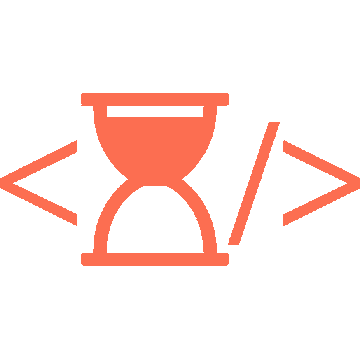Computer aus Nand2Tetris in HDL
Der Computer bestehend aus CPU, RAM (Memory) und ROM (ROM32K):
CHIP Computer {
IN reset;
PARTS:
CPU (reset=reset, instruction=i, inM=j, addressM=k, writeM=l, outM=m, pc=n);
Memory(in=m ,load=l ,address=k ,out=j);
ROM32K (address=n, out=i);
}
Die CPU mit ihren Hauptbestandteilen Controll Unit, A und D Register, Rechenwerk (ALU) und Program Counter (PC):

CHIP CPU {
IN inM[16], // M value input (M = contents of RAM[A])
instruction[16], // Instruction for execution
reset; // Signals whether to re-start the current
// program (reset==1) or continue executing
// the current program (reset==0).
OUT outM[16], // M value output
writeM, // Write to M?
addressM[15], // Address in data memory (of M)
pc[15]; // address of next instruction
PARTS:
// a or c-type instruction?
Not(in=instruction[15], out=aType);
Or(a=instruction[12], b=false, out=cType);
// where to store
And(a=instruction[5], b=instruction[15], out=writeA);
And(a=instruction[4], b=instruction[15], out=writeD);
And(a=instruction[3], b=instruction[15], out=writeM);
// logical conditions needed for the control logic
Not(in=zr, out=jne);
Not(in=jle, out=jgt);
Or(a=zr, b=jgt, out=jge);
Or(a=zr, b=ng, out=jle);
// the actual control logic
Mux8Way(a=false, b=jgt, c=zr, d=jge, e=ng, f=jne, g=jle, h=true, sel=instruction[0..2],
out=jumpIfaType);
And(a=instruction[15], b=jumpIfaType, out=doJump);
// the mux on the left of diagam 5.9
Mux16(a=ALUout, b=instruction, sel=aType, out=Ain);
// A register (could use plain register, but tests want it)
Or(a=aType, b=writeA, out=loadA);
ARegister(in=Ain, load=loadA, out=Aout, out[0..14]=addressM);
// D register (could use plain register, but tests want it)
DRegister(in=ALUout, load=writeD, out=registerD);
// the mux on the right of diagam 5.9
Mux16(a=Aout, b=inM, sel=cType, out=inputALU);
// alu
ALU(x=registerD, y=inputALU, zx=instruction[11], nx=instruction[10], zy=instruction[9],
ny=instruction[8], f=instruction[7], no=instruction[6], zr=zr, ng=ng, out=ALUout);
// needed for feeding back as outputs of the CPU cannot be fed back
Or16(a=false, b=ALUout, out=outM);
// program counter
PC(in=Aout, load=doJump, inc=true, reset=reset, out[0..14]=pc);
}
Das RAM mit dem inkludierten Bildschirm und der Tastatur:
CHIP Memory {
IN in[16], load, address[15];
OUT out[16];
PARTS:
DMux4Way(in=load, sel=address[13..14], a=a, b=b, c=c, d=d);
Or(a=a, b=b, out=i);
RAM16K(in=in, load=i, address=address[0..13], out=j);
Screen(in=in, load=c, address=address[0..12], out=k);
Keyboard(out=l);
Mux4Way16(a=j, b=j, c=k, d=l, sel=address[13..14], out=out);
}

 Bitlove
Bitlove